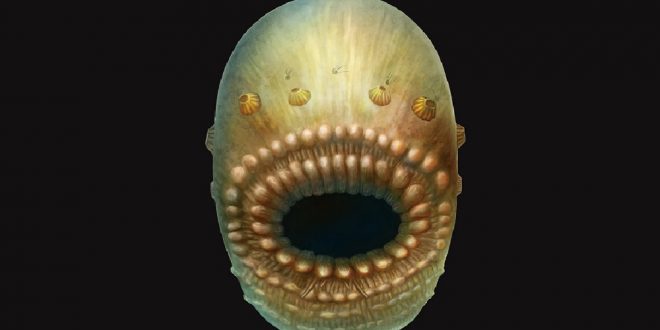A group of international researchers in China have discovered what they say is the oldest known ancestor of humanity.
The 540-million-year-old fossil is a microscopic sea animal, no larger than a millimetre in size, called a Saccothytus. It was discovered in central China.
The creature was discovered by University of Cambridge paleobiologist Simon Conway Morris and colleagues, resembled an old wrinkled bag covered in spikes. In addition, its body was covered in holes that were likely used to excrete waste and it most likely “slithered” in mud, sand or sediment in shallow sea waters, the authors noted.
Dubbed Saccorhytus, which Conway Morris said “basically means a wrinkled bag,” the creature had “a very small body” (no larger than a grain of rice), but it does not appear to have had a tail, eyes or an anus – although, as the media outlet pointed out, its expandable mouth sure appears to be capable of doubling as one – yet despite appearances, it seems to be a human relative.
As reported in the Nature study, the researchers discovered 45 of these creatures, which date to the early Cambrian period of South China and which may be the earliest known deuterostome (a group of organisms that includes any animal with a mouth that develops from a second opening in the early embryo, including starfish, sea urchins and even vertebrates).
Saccorhytus, vertebrates share a common branch on the evolutionary tree Since many scientists believe that deuterostomes are the common ancestor of so many different types of creatures, there has been tremendous uncertainty regarding what such a progenitor might look like, according to CNN. Now, thanks to the work of Conway Morris and his colleagues, we have an idea in the form of Saccorhytus – even if the resemblance is hard to see.
However, as the website explained, discovering this creature was no easy task. The researchers had to dig through three tons of limestone to find these tiny creatures, then use a microscope to further analyze them. Through their efforts, they discovered that these creatures had an elliptical body with bilateral symmetry, thin and flexible skin and some evidence of musculature.
Furthermore, its large mouth was able to expand, allowing it to consume food particles and prey larger than itself. It also had eight cone-shaped structures surrounding its body that appear to be similar to gills, which would allow it to remove excess water. Larger waste likely would have been excreted through the mouth, the study authors told CNN.
“We think that as an early deuterostome this may represent the primitive beginnings of a very diverse range of species, including ourselves,” Conway Morris said in a statement, according to USA Today. “To the naked eye, the fossils we studied look like tiny black grains, but under the microscope the level of detail is jaw-dropping. The actual creature was probably no more than a millimeter in size.”
Despite the obvious differences, Saccorhytus “belongs to the same ‘branch’ of the tree of life as humans,” Tom Harvey, a lecturer in geoscience at the University of Leicester who was not part of the study, told CNN. As a result, it “could be seen as one of our early human ancestors,” he added. “Funny to think, but in half a billion years, a lot of evolutionary changes can take place.”
Agencies/Canadajournal
 Canada Journal – News of the World Articles and videos to bring you the biggest Canadian news stories from across the country every day
Canada Journal – News of the World Articles and videos to bring you the biggest Canadian news stories from across the country every day



